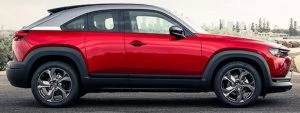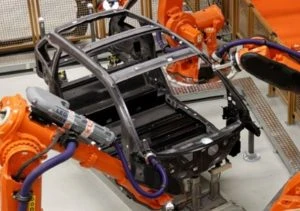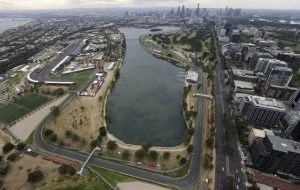Sustainability/Green
Some More Exciting Mazda News

If you are anything like me, then you’ll be driving along the highway spotting the cars coming the other way. One of the snazzier brands out on the roads would have to be those from out of Mazda’s showrooms. Mazda’s great variety of models all look great and boast some striking modern designs. Even the new Mazda BT-50 ute, a very reliable workhorse, is looking pretty slick, and so too the family-oriented new Mazda 6 Sedans and Wagons. Mazda also offers a wide range of brand new SUVs with sharp looking exteriors and endearing interiors that are well-equipped. The small MX-30 is one of these SUVs, and it also has some cool new materials used inside the cabin – like the cork inlays that offset nicely against the premium leather trim.
Toyota, Mazda, Kia, and Hyundai sell the most cars in Australia; Toyota being out in front by a decent margin, with Mazda coming in at second place. For quite some time, in Australia, Mazda has been a popular vehicle to buy. Mazda’s 2022 sales of 43,687 are down 9% on this time last year, though Mazda retains its 2nd placing to Toyota’s 1st place for overall sales. Sales drops have occurred right across the market, thanks to the shortages of components and current logistical issues. Mazda had sold 101,119 vehicles in 2021, quite a large portion of the whole pie, considering all the brands that are available to buy new in Australia.
So, what’s some hot off the press Mazda news?
You may have noticed a tidy looking compact SUV running our roads the past couple of years. Mazda’s MX-30 is one of Mazda’s newer creations in recent times – gaining in popularity too. The little Mazda MX-30 has been a key model for Mazda in that this has been Mazda’s model of choice for bringing new technologies, hybrid motoring, and EV motoring into their modern fleet of vehicles that will also lead them in a new direction for future motoring.
As the direction of future transport trends toward cleaner engines and lower emissions, Mazda launched a series of mild-hybrid powertrains. We saw these first being used in the Mazda 3 and Mazda CX-30. The Mazda MX-30 provided a mild-hybrid engine, but Mazda also made available their brand new pure-electric drivetrain available for the MX-30. Designed purely for an emissions-free city commute, the Mazda MX-30 Electric uses its 107 kW to whistle up to 0-100 km/h in 9.7 seconds and up to a top speed of 140 km/h. The driving range proves to be over 175 km, a handy dollop of motoring before recharging needs to happen.
Some other new Mazda technology which will be implemented will be that of a new small rotary engine as a supplementary power source. With a NEDC (New European Driving Cycle) accredited range of 224 km, this will provide Mazda-buyers with another means of excellent low-emission city transportation.
Mazda’s approach to electrification is based on the customers’ demand for EVs, and the regional infrastructure available to support them. Within 5 years, Mazda hope to introduce a new hybrid system alongside more battery-electric models in their line-up of new vehicles. This is in response to the newer European emissions rules that come into effect.
Towards the end of this decade, Mazda’s entire line-up will offer fully electrified versions. One model that has been talked about as being another exciting Mazda EV will be the little MX-5’s progression into EV powering. Now that’s a tasty thought!
Carbon Fibre’s use in Cars
It may come as no surprise to you that the amazingly strong and lightweight material – carbon fibre – has been used in some of the high-end sports cars and racing cars. Cars like the Koenigsegg Agera, the McLaren Senna, Porsche’s 918 Spyder, the Ferrari LaFerrari, Alfa Romeo’s 4C, and BMW’s i8 use a carbon-fibre monocoque body shell in their design. Even BMW’s recent i3 EV city car boasts a carbon-fibre monocoque cell.

BMW i3
Of course, there are many pieces that make up a car’s whole, many of which there are components which can also be made up of carbon fibre, and these are actually more prevalent in different forms and measures throughout the motoring industry, particularly in high-end luxury cars. In some of BMW’s and Porsche’s latest premium cars, carbon fibre has been introduced in various arrangements within the vehicles’ body components. Obviously, the rarer the part, then it will have quite an expensive price tag attached.
Then there are multiple smaller workshops and larger businesses dedicated to creating special automobile parts and designs made from the composite material carbon fibre. Some of these components might be a certain air diffuser or spoiler to make the car look more aggressive or more aerodynamic. Some of these businesses even make carbon fibre interior wraps with a distinctive pattern to make an individual’s car stand out from the crowd.
So, what is carbon fibre?
A quick science lesson first to help us understand: Carbon is number six on the periodic table, and so the carbon atom consists of 6 protons, 6 neutrons, and 6 electrons. Two of the 6 electrons fill up an electron shell close to the carbon atom’s nucleus, while the other four electrons sit in a half empty electron shell around the outside. These electrons running about on the outside shell are known as valence electrons and are the key to carbon’s amazing and incredible properties. Any electrons in an atom’s outer shell are involved in taking part in forming chemical bonds. How many bonds these electrons are involved with depend on how much room there is in the outside shell. What makes carbon so amazing is that it has got space for four other electrons to make its outer shell full. This attribute makes carbon a four-way connector that can link atoms together.
A polymer is any material that is made of long, repeating chains of molecules. So, carbon can build up straight chains of carbon atoms, carbon chains with branches, and even carbon chains that are joined end to end to make loops! So, a carbon polymer is made up of chains and chains of carbon molecules that are linked up in a scaffolding-type structure. Carbon can bond to itself, but, when it doesn’t, the end of the carbon chains can terminate with other elemental atoms. For example, a carbon chain can finish up with a small hydrogen atom, which makes these chains slippery like in oils. Carbon chains can also connect to other groups of elements, making them a specific ‘functional group’, each group having a different chemical property.
Graphite is a crystalline form of the carbon element. Individual layers of graphite are some of the strongest structures that we know about in the universe. Carbon fibre material is made up of individual layers of graphite, which on their own are quite slippery. Carbon-fibre-reinforced polymer (CFRP) composites (also known as carbon-fibre laminates) are made up of woven layers of nearly pure carbon fibres that are bonded together by a hardened plastic like an epoxy resin. CFRP composites are therefore extremely strong and stiff.
A stretched carbon fibre is up to five times the strength of steel, as durable as steel, but only a quarter of steel’s density. Being this strong and much less dense than steel makes carbon fibre a lighter and stronger material than steel. On top of being extremely strong and lightweight, carbon fibre is also high in chemical resistance, has a high stiffness, has low thermal expansion, has a low weight to strength ratio, and is tolerant of excessive heat. These are the reasons why carbon fibre is so sought after in the motor racing arena and in high-grade luxury sports vehicles? These amazing properties make carbon fibre a very popular material for use in aerospace, military, recreational, as well as in automotive industry applications.
As CFRPs become more readily available, the trickle down effect will see it being more and more a part of a new mainstream motor vehicle, EVs included.
A Shout-out To Formula One

Formula One is an exciting motor racing competition that races the fastest regulated road-course racing cars in the world. It has been one of the premier forms of racing since its first official season in 1950.
Australia hosts one of the current racing locations in the Formula One Championship, the Australian Grand Prix, which is contracted to host Formula One up until 2035. Although the Australian Grand Prix has been held at many different locations since it was first run at Phillip Island in 1928, currently the Australian Formula One race is held at the Melbourne Grand Prix circuit, Albert Park. The next race scheduled to be held at the Melbourne Grand Prix circuit will be on 30th March – 2nd April 2023. Get you tickets now!

Albert Park, Melbourne F1 Grand Prix Circuit
There have been various changes to the Formula One racing rules since the races began. A major rule change in 2014 axed the 2.4-litre naturally-aspirated V8 engines in favour of the smaller 1.6-litre turbocharged hybrid power units. This change prompted Honda’s return to the sport in 2015, where they were the championship’s fourth engine manufacturer for the competition. Mercedes has emerged as the dominant force since that major engine rule change.
Renault came back as a team in 2016 after buying back the Lotus F1 team. In 2018, Aston Martin became Red Bull and Alfa Romeo became Sauber’s title sponsors. Sauber was rebranded as Alfa Romeo Racing for the 2019 season, while Racing Point’s part-owner Lawrence Stroll bought a stake in Aston Martin to rebrand the Racing Point team as Aston Martin for 2021.
In August 2020, a special new Concorde Agreement was signed by all of the ten competing Formula One (F1) teams, which further committed them all to the sport until 2025. This agreement also included a $145-million budget cap for F1 car development, which also supported equal competition and a sustainable journey of development into the future of F1.
Formula One has also launched a plan to become carbon neutral by 2030, and by 2025, all F1 events should become “sustainable”, which will include eliminating single-use plastics and ensuring all of the race’s waste products are reused, recycled or composted. 2022 sees all F1 cars increasing the bio-component of their fuel, using E10 fuel rather than the 5.75% Ethanol fuel that is currently used. The percentage of ethanol in the fuel is expected to increase again in the future. By 2026 we should see a fuel with 100% sustainability; this occurring at the same time that the new engine regulations come into force.
Some Interesting F1 Info
The modern Formula One car is mid-engined and hybrid-powered. They have a semi-open single-seater racing cockpit, and all four wheels are out in the open. An F1 car’s chassis is made up using mostly carbon-fibre composites, thus making it very light but also extremely stiff and strong. The whole F1 car, including the driver but not the fuel, weighs just 795 kg (the minimum weight set by the current regulations). If the construction of the car is lighter than 795 kg, it can be ballasted up to make the necessary weight requirement. Each driver may use no more than thirteen sets of dry-weather tyres, 4 sets of intermediate tyres, and 3 sets of wet-weather tyres during one race weekend.
For much of the sport’s history, qualifying sessions differed little from the practice sessions. The drivers would have one or more sessions in which to set their fastest time, with the grid order being determined by each driver’s best single lap time. Predictably, the driver with the quickest lap got first place on the grid, which is also referred to as pole position.
The Formula One race begins with a warm-up lap, after which the cars assemble on the starting grid in the order that each driver qualified. This warm-up lap is often also referred to as the formation lap because the cars lap the circuit in formation, with no overtaking allowed. The warm-up lap gives the drivers the chance to check the condition of the track as well as their car, ensuring that the tyres get a chance to warm up to race temperature, thus increasing traction out on the tarmac at high speeds.
The winner of the race is the first driver to cross the finish line having completed a set number of laps. The points system gives 1st place 25 points, 2nd place 18 points, 3rd place 15 points, 4th place 12 points, 5th place 10 points, 6th place 8 points, 7th place 6 points, 8th place 4 points, 9th place 2 points, and 10th place 1 point.
All points won at each race are added up, and the driver and the formula 1 constructor team with the most points at the end of the season are crowned World Champions. The points system occurs regardless of whether a driver stays with the same team throughout the season, or switches teams. Therefore, all the points earned by a driver during the season count toward the Drivers’ Championship title.
Who is driving for which team in 2022?
| Mercedes | Lewis Hamilton | George Russell |
| Red Bull | Max Verstappen | Sergio Perez |
| Ferrari | Charles Leclerc | Carlos Sainz |
| McLaren | Lando Norris | Daniel Ricciardo |
| Alpine | Fernando Alonso | Esteban Ocon |
| AlphaTauri | Pierre Gasly | Yuki Tsunoda |
| Aston Martin | Sebastian Vettel | Lance Stroll |
| Williams | Alex Albon | Nicholas Latifi |
| Alfa Romeo | Valtteri Bottas | Guanyu Zhou |
| Haas | TBC | Mick Schumacher |
Formula One is a very exciting high-stakes race to watch. High speed and loads of drama often play out in front of your eyes, so make sure you book yourself a ticket to the next Melbourne Grand Prix. And, if you’re wallet’s plump, why not get around some of the other amazing Formula racing locations around the globe come race day.
How Much is Too Much for EV Driving Range?

How long should an EV be able to travel on a full battery? ‘Neue Klasse’, from BMW, suggests that 1000 kilometres is about right. BMW’s New Class of vehicles are not far off the runway now, said to be arriving in 2025. And they are going to be the first BMWs-ever that have been designed from the ground up to be specifically all-electric, EV through-and-through.
That does raise an interesting question: How far should we expect our brand spanking new EVs to go on a full charge (a full tank of electrons instead of a full tank of gas)? Should we be able to drive from Sydney to Melbourne (877 km), Sydney to Adelaide (1374 km), Sydney to Cairns (2430 km), Sydney to Perth (3932 km), or just Sydney to Wollongong and back (about 175 km) on a full battery?
Most of us are probably sick of driving non-stop after 6–8 hours max in a day. So, say most of that was done at 100 km/h, then 100 × 8 hours would get you to 800 kilometres before you’d be needing a proper cup of coffee in a proper coffee cup! It would be then you’d want a rest and a sleep, right?
Perhaps Neue Klasse has got it bang on then. 1000 km would cover an all day blast up the coast from Sydney to Brisbane, which is approximately a total of 911 kilometres via the coastal route. Get to the end of that journey, and you could pull up at a mate’s place for tea, or a motel, and plug in your EV overnight ready for the long drive back home.
According to Thomas Albrecht (BMW’s head of Efficient Dynamics), in 2025, New Class EV BMWs are set to have “thirty-percent or more” range than what’s currently available now. That means that the brand-new BMW EV platform with lots of fresh pieces of technology, including 46 mm cylindrical battery cells, should push the Generation 6 batteries out to around 1000 km before they run out of electron juice. Even though BMW could go further than this 1000 kilometre range, Albrecht suggested that this would be the maximum that BMW will offer because they don’t think that such a long range is necessary.
BMW will debut the new Generation 6 batteries in the 2025 BMW 3 Series EV. How much do you think we should be able to get out of the battery packs in any new EV bought in 2025–2030? I’d be interested to know – remembering that battery tech and recharging times will likely have vastly improved by then.